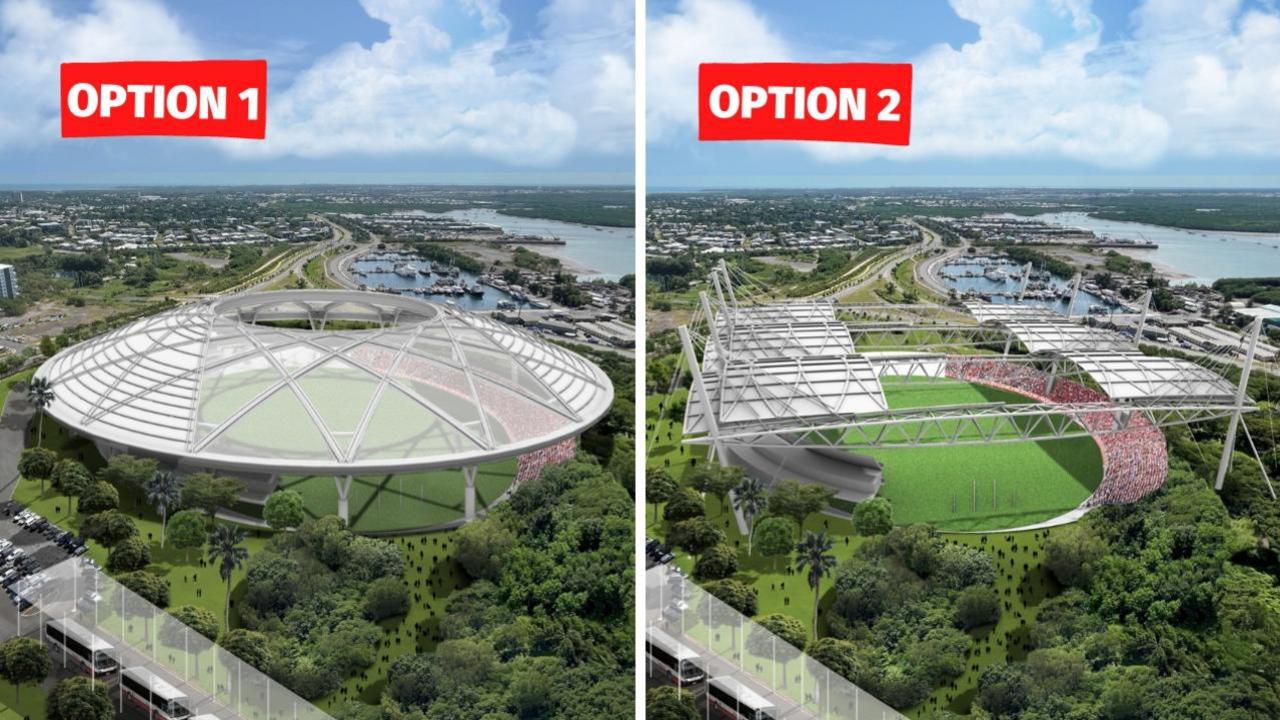The Northern Territory has taken its next step in trying to land the AFL’s 20th team, releasing a business case which claims major economic benefits – but admits it would need AFL and government support.
A business case released on Thursday claims a new stadium in Darwin’s CBD could be built within the next seven to 10 years at a cost between $700-$735 million, allowing the team to enter a few years after the Tasmania Devils who’ll begin play in 2028.
The plan also calls for $80 million in upgrades to Traeger Park in Alice Springs over the next three years, plus $160 million in further improvements to the ground along with a refurbishment of TIO Stadium in Darwin.
Watch every game of every round this Toyota AFL Premiership Season LIVE with no ad-breaks during play on Kayo. New to Kayo? Start your free trial today >
“This will complete the AFL, it will make the AFL a truly national competition,” AFLNT chairman Sean Bowden said on Thursday.
“Ultimately, the biggest challenges for us are going to be … making sure our talent pathways are strong, the conditioning of players, and just winning the belief of the national competition that this is the right place and that we can take our rightful place in that competition.”
The business case claims a team would be worth $116 million per year for the Northern Territory, helping the region’s stated aim of population and GDP growth.

The major benefits of an NT team, adding a seventh state or territory to the league and representing the large Indigenous community there which has an enormous impact on Australian rules football, have seen the idea draw plenty of support.
But the financial realities remain a problem. The NT is less populated and wealthy than Tasmania, which for a long time was viewed as too small a market for an AFL team, and is still working through the AFL-mandated construction of a new stadium in Hobart.
The business case acknowledges an $18.89 million per year funding gap, meaning additional AFL, territory and federal funding is likely to be required for the team to operate.
It expects the team, once operational, to involve 165 jobs on and off the field and 180 indirect employees, while also conceding a number of risks.
These include needing a fit-for-purpose stadium, commercial viability, Indigenous community support and the team to perform well, noting: “Expansion teams in the AFL have experienced mixed successes in terms of performance. Sustained poor on and off field performance of a NT Club may have a detrimental impact on its long-term success and viability.”

The AFL is viewed as likely to grant a 20th license to allow the creation of a 10th weekly game, which would add millions to their media deals and help pay for the new clubs.
AFL CEO Andrew Dillon talked down the idea of a third club in Western Australia last month, even though it has arguably the strongest financial case due to a large footy fanbase and the benefits of playing more than one game a week at Optus Stadium. It would also force east coast teams into more cross-country trips.
But the drawbacks include the complexities of team ownership – with both West Coast and Fremantle owned by the West Australian Football Commission – and finding the right location.
“A lot of work would have to be done,” Dillon said.
“I’m not that against an odd number of teams. Freo and West Coast work pretty well in Perth.”
A third South Australian team, perhaps SANFL powerhouse Norwood, or a Canberra side are also in the mix.
However SA is behind WA in most key metrics, such as number of footy fans and financial support available, while the AFL appears set on giving the GWS Giants access to the nation’s capital for both games and Academy purposes.
Source Agencies



